2012 Sea-Doo Wake Pro 215 Review
Wake features enhance GTX-based model
Sea-Doo has a split focus when it comes to towing. At the intermediate level, the WAKE Pro 155 fits the bill. At the high end, it’s the Wake Pro 215 that rules the water.
The difference? Primarily an engine and a hull.
Same But Different
The engine is the 215 hp version of Sea-Doo’s 4-TEC, equipped with a supercharger and intercooler to give it the added boost that will thrill speed junkies on the top end, and offer the midrange punch to pull your tow crowd out of the water. Top speed is between 63-65 mph in good conditions (I personally recorded a 63 in choppy, un-tow-like waters), and acceleration can be modified to hit full on in the boat’s electronic-throttle-controlled Sport mode, give a gentler acceleration in the aptly named Touring mode, or even find the best fuel economy in a green-minded Eco mode.
That hull? It’s the S3 found in the GTX and RXT lines. It’s a rough-water champion, but also boasts a surprising ability to carve a tight corner. It’s agility you don’t always expect in a big craft, and it makes the boat fun even when no one is playing in its wake.
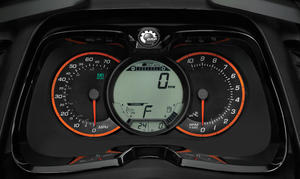
In short, the Wake Pro 215 is kind of the GTX 215 in a different cover. It offers cool features like Sea-Doo’s Intelligent Brake & Reverse (iBR), which gives the craft some stopping power via a computer-controlled bucket at the stern as well as gives it the forward-neutral-reverse characteristics of a prop boat. And it includes basics like cruise control and no-wake mode.
Now here’s what makes the Wake different…
All Things Wake
As the name suggests, the Wake is geared equally toward those who play on its saddle as well as those who frolic in its jet wash. Enhancing that latter ability are two primary additions, an extended tow pylon at the stern and a gunwale-mounted board holder. The former lifts the towrope out of the craft’s wash and provides a more consistent pull. It also serves as a clever handhold for that aft-facing spotter. The latter simply reduces clutter. Rather than cram a board into a footwell where it is sure to scrape a shin or two, that same board can now be secured along the gunwale.
The Wake’s electronic speed control also gets tweaked another notch. In addition to the Touring and Sport mode concept, the Wake adds a Ski mode. It allows the driver to choose one of five progressively stronger acceleration curves, and duplicates them every time rather than rely on a driver’s often inconsistent trigger finger. Choose a gentler acceleration for tubing or the kids, or a strong pull for big Uncle Al. Should a rider fall, the computer remembers the setting and repeats it, leaving the driver only to squeeze the throttle and steer a straight course.
 Sea-Doo’s Variable Trim System gives the driver control over the Wake’s bow.
Sea-Doo’s Variable Trim System gives the driver control over the Wake’s bow.What else? High-performance trim reacts quickly to driver input, allowing you to keep the bow low for accelerating to speed, or trimming it high to enhance the craft’s wake. Sure, that wake is minimal. Name or not, this is still a PWC. But you can tweak it, as well as use that trim when you’re not towing the line. Wide-angle mirrors also keep good tabs on what’s happening behind.
Of course, you also get a graphics and color change. The Wake crowd is a notoriously younger (or younger at heart) demographic. The Pro 215’s style reflects that fact in its appearance with both bolder colors and stylized graphics.
Do-B-Do-B-Doo
As mentioned, hidden below the surface remains the familiar GTX 215, so you get all the basics you would expect. That includes a reboarding ladder, and two separate lanyards, one that limits top speed and both that act as theft-prevention keys. Up front, a removable storage bin keeps gear dry and can be hauled home between rides. Overall storage, however, is only 13.7 gallons. Maybe not a big deal to some, but the Wake certainly offers less storage than the competition.
Will the Wake make you a superstar wakeboarder? Probably not. The wakes are just too small to deliver the kind of air you’d get from a boat. But wakeskaters love them for the reason that those very same wakes aren’t as cumbersome for tricks, and they don’t rock anchored sliders or ramps. Recreational wakeboarders will enjoy the fact that a PWC is far easier to trailer, as well as less thirsty at the fuel dock.
In short, if you’re a PWC enthusiast who’s into tow sports, the Wake makes its case.
| 2012 Sea-Doo WAKE Pro 215 Specs | |
| Length | 139.0 inches |
| Beam | 48.2 inches |
| Dry Weight | 834 lbs |
| Engine | Three-cylinder EFI, Supercharged/Intercooled |
| Displacement | 1,494 cc |
| Bore and Stroke | 100mm x 63.4mm |
| Compression Ratio | 8.4:1 |
| Rated Horsepower | NA (215 in past years) |
| Fuel Capacity | 15.9 gal. |
| Combined Stowage Capacity | 13.7 gal. |
| Colors | Wake Red with NEW graphics |
| Price | $13,899 |
Related Reading
2010 Sea-Doo WAKE Pro 215 Review
2012 Sea-Doo GTX 215 Review
2012 Sea-Doo GTR 215 Review
Get PersonalWatercraft.com in your Inbox!
Like PersonalWatercraft.com on Facebook
Comments
Most Popular
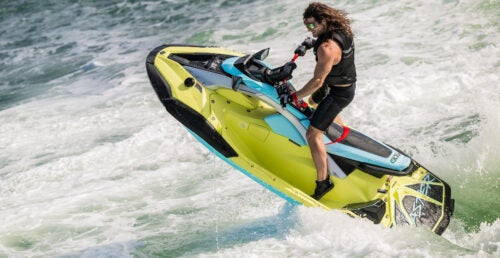
2025 Yamaha JetBlaster PRO 2-Up Review
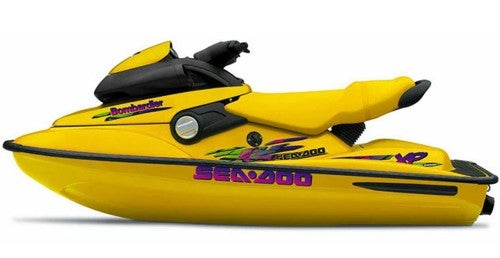
Remembering the Sea-Doo XP
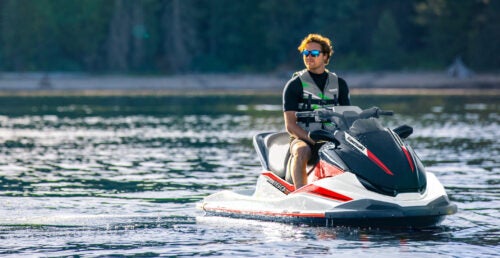
2024 Kawasaki Jet Ski STX 160X Review
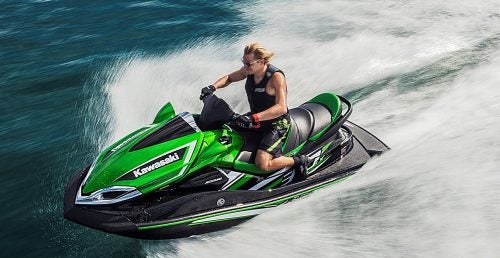
2017 Kawasaki Jet Ski Ultra 310LX Review
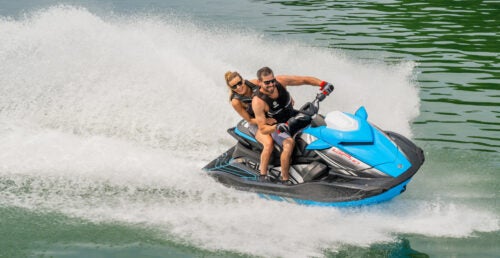
2024 Yamaha GP HO Review




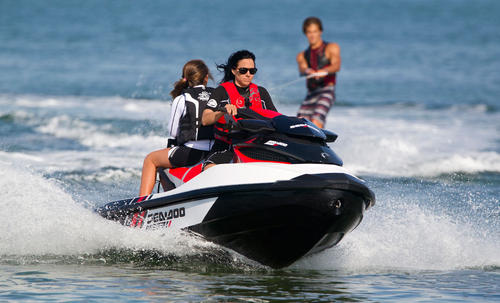
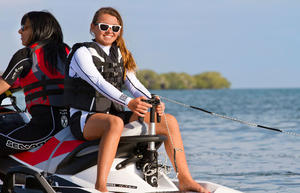
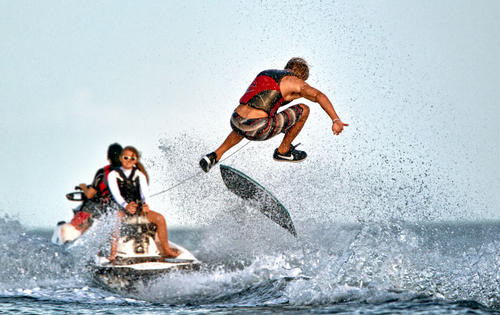



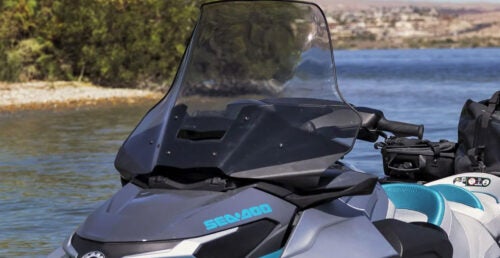
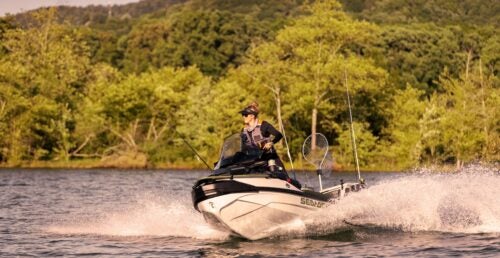


 Your Privacy Choices
Your Privacy Choices